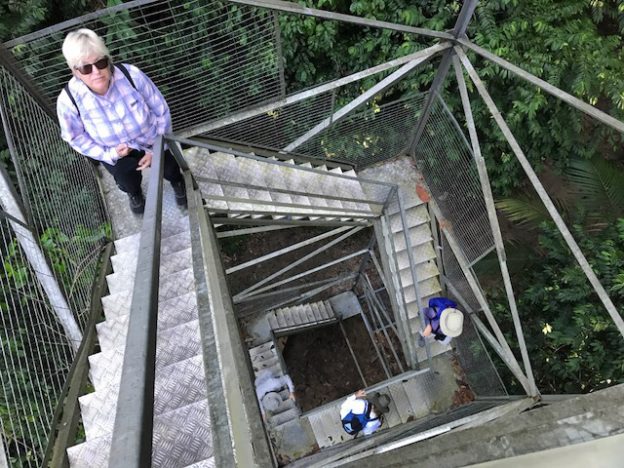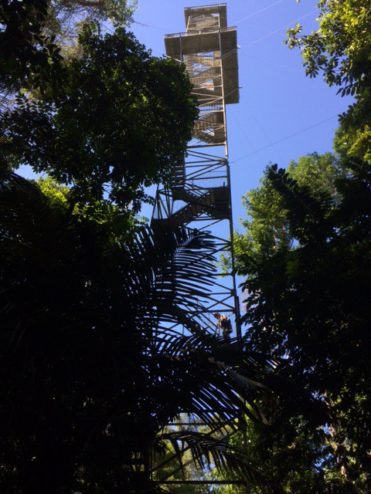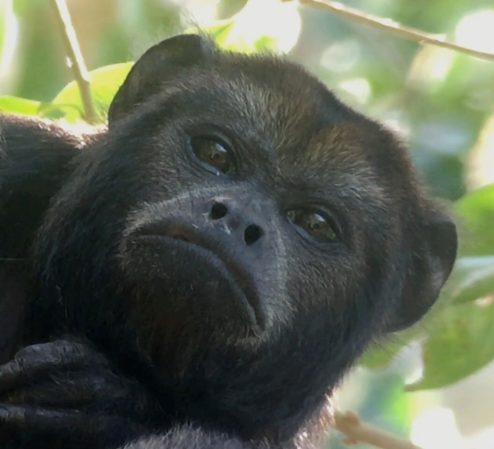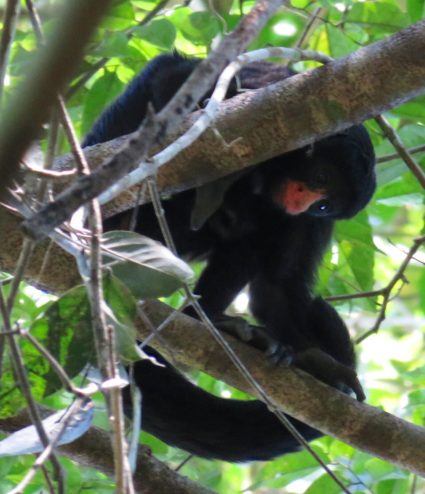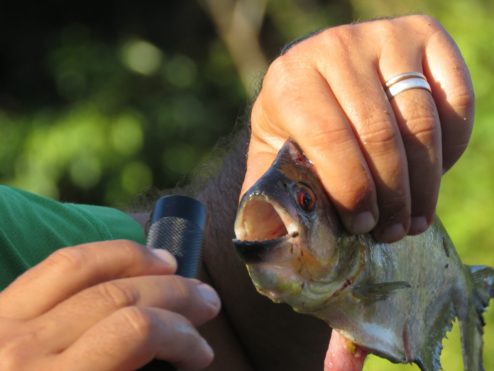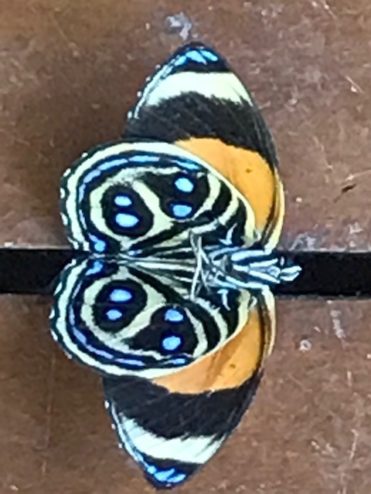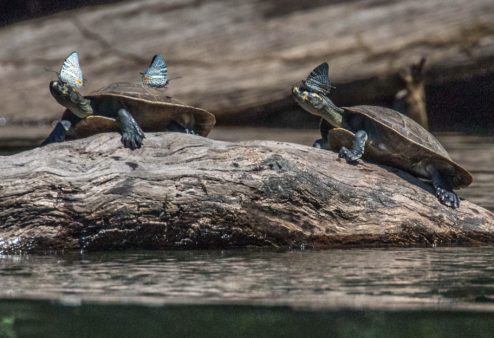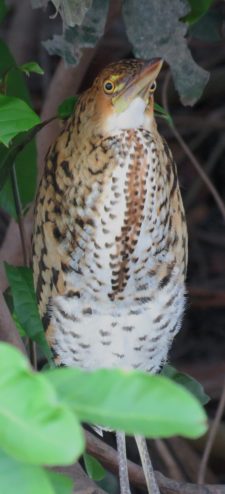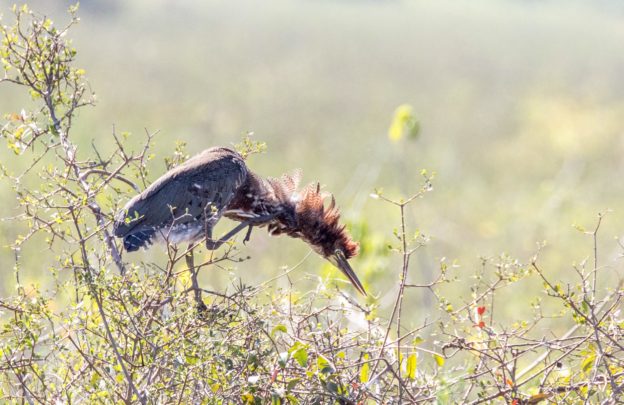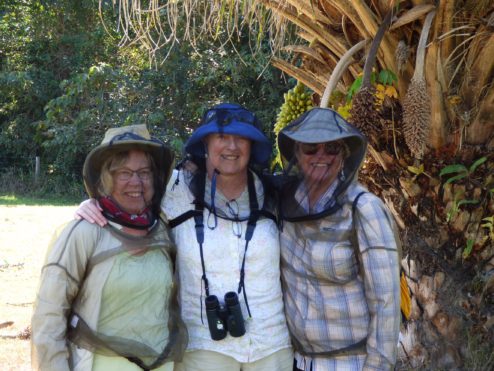
Seasonally, 80% of the land is a flooded plain covering 75,000 sq. miles. 99% is privately owned land used as Fazendas (cattle ranches) many of which have become eco resorts with fast boats for touring the rivers year round, and by horseback in dry season. Rain drops 55 inches a year but the rivers and tributaries can make 15 foot rises in the wet season. Julia, Mary, and Sally took their protection from mosquitos and the Zika Virus seriously.
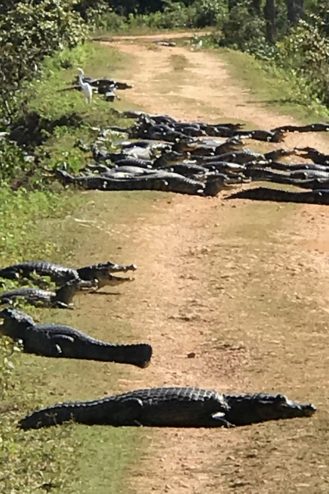
3500 known plant species, 1000 bird species, 400 fish species, 300 mammalian critters, 480 reptiles, and 9000 invertebrates keep your eyes alight for new flora and fauna at every turn. With over 10 million Yacare Caiman in the Pantanal, they become road obstruction before long. They hang out peaceably with Capybaras…unless the food source gets too low.
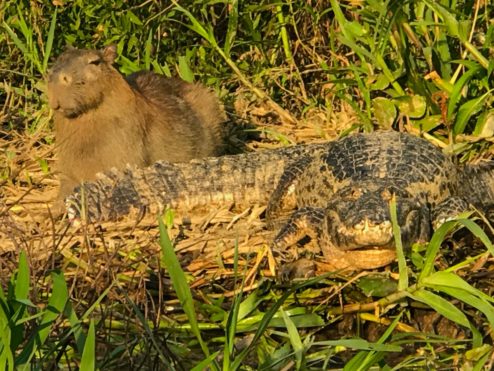
Both are food for the numerous Jaguars that would be expanding if the local ranchers weren’t killing off 200-300 a year in retribution for livestock killings. At the Pouso Alegre cattle ranch we found 2 freshly killed cattle, the first ever on this ranch. However, the owner is committed to protecting the Jaguars, so these two we found again the following evening (mating, so making some noise in the dark) will remain safe. Three of us went horseback riding during the day without a thought until we realized how close and bold the big cats were!
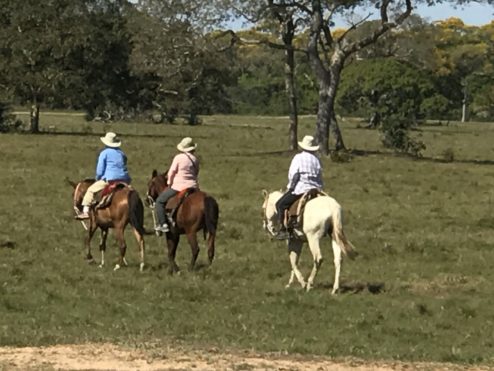
Some of the rare finds were the Hyacinth Macaws…
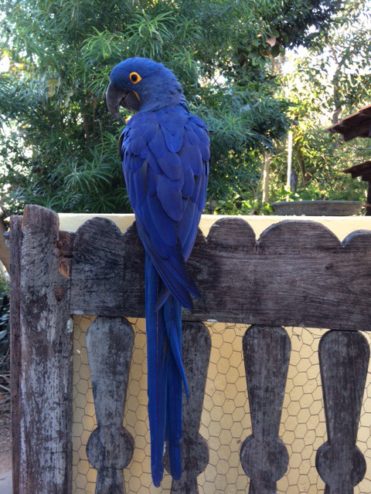
Giant Tapirs…
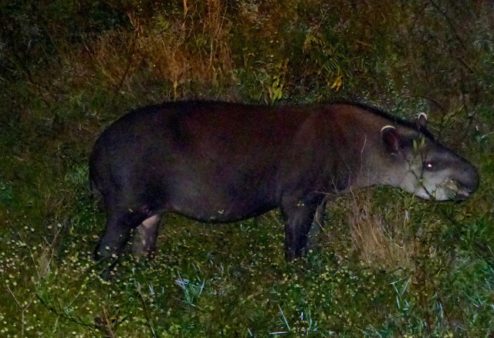
…Giant River Otters…about 6 times the size of our Monterrey Sea Otters! This baby is captured looking pretty glum after minutes of loud demanding whining for a bite of catfish, that was ignored by the adult until he had eaten his fill.
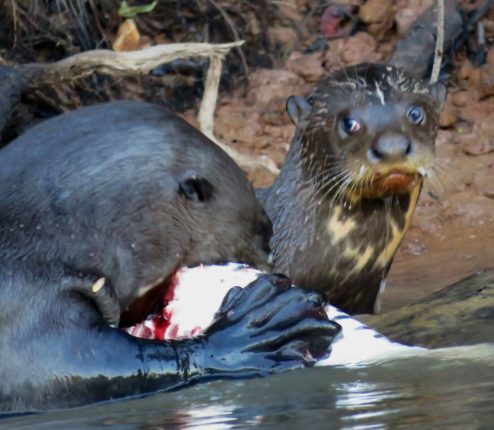
…and Giant Anteaters, which we didn’t see but saw their cousins, arboreal anteaters called Southern Tananduas. We did not actually see this one below but include it because our cameras were incapable of capturing a meaningful image at night when we happened on one right next to the road. Cool looking beastie, no?
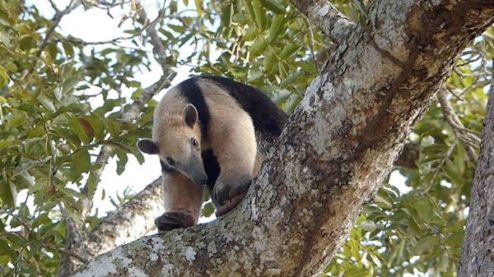
Only one road crosses the Pantanal. A dirt dike crossing 120 wooden bridges between Cuiaba and Port Jofre on the Cuiaba River, a tributary of the massive Paraguay River. The Military built this part first, realized the expense was enormous, and abandoned the project at this muddy bank, where Steven enjoys a brief rest waiting for our transportation up river to the houseboat. The fast boat in the background was our daily “ride” up the rivers for exploration.
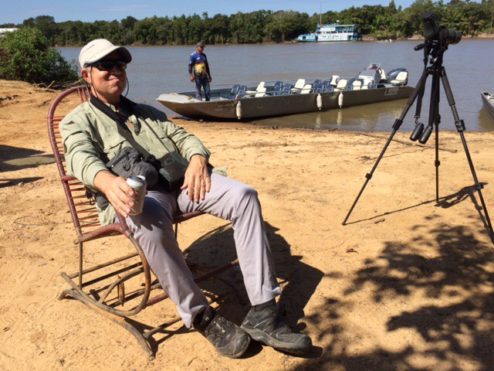
Our stays on ranches and houseboats on the River, gave us access to over five separate, “up close and personal” jaguar viewings. This beefy male sipped for 5 minutes then swam the river 10 feet in front of our speed boat while we sidled below him swimming the river…and our biologist cried with joy at the unique viewing. The jaguar is the 3rd largest cat in the world. They are so powerful, they crush the skull of their prey with one massive bite rather than strangle them by the throat.
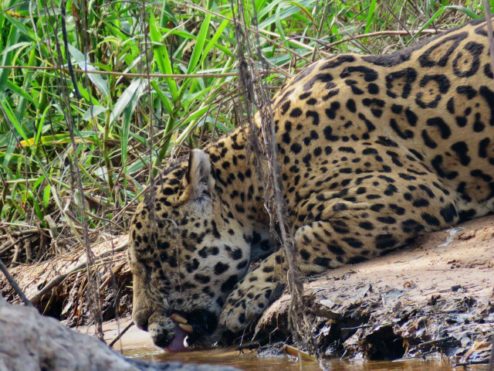
Immersion into the strangeness of a wetlands, accessible during the dry season, is something we cannot compare to any other safari, birding tour, or backcountry hike. This is the Big Mama of biological diversity using every exaggerated description you could apply. Truly mindblowing, over and over again. These Red-Legged Seriama gave us the strangest, loudest concert sounding like hyenas with a descending laughing call and response including harmonics…for 5 minutes! They almost swallow their necks like a compressed snake to generate that volume, choking out these drawn out calls.
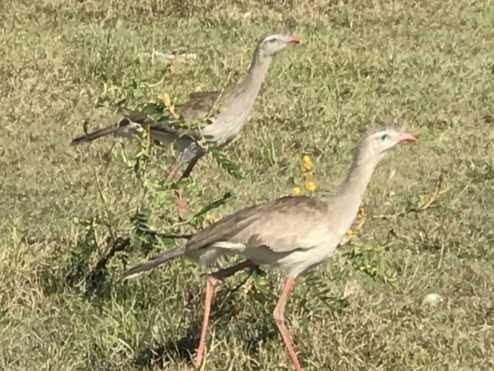
The other oddity was watching humans standing in intensely hot sun waiting for some wild animal to leave its’ lair, then strolling by the ranch kitchen areas and seeing them up close getting fed leftovers from the kitchen staff. My only chance for great pictures on my I-phone as the animals were finally close enough, I almost got creamed by two giant vultures who wanted the food in my hand for feeding the nine-banded armadillos. Unfortunately, without a thick armor, I had to throw the food and run!
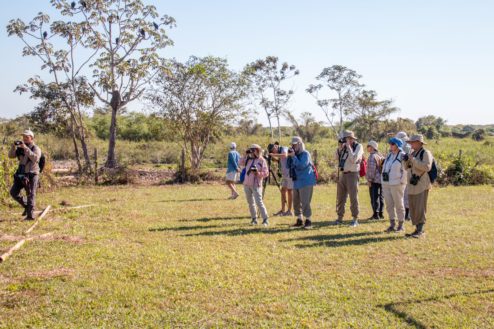
Startling, awe-inspiring meetings with wild animals throughout the day and night, is really hard to describe. I have pages of names of fabulous birds, tons of photos, and I am overwhelmed looking at them; Karen Share, Jim and others on our trip have generously shared photos. From 5AM wake up calls by Howler Monkeys to Jaguar tracking late at night, the days have been full. Then there is the human cultural diversity, a traffic jam on the Pantaneira Highway as motorcyclists, horses, and cattle have to share the narrow road above the vast plain of wetlands extending out on both sides.
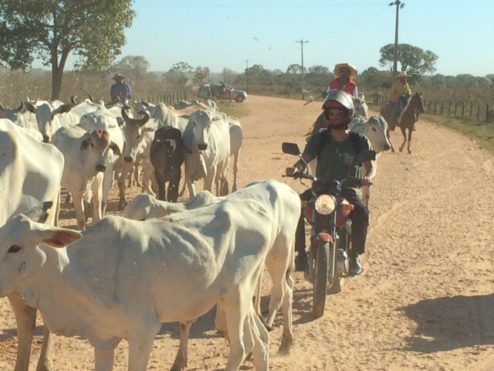
This Tegu Lizard is an example of a primitive beauty right at our feet at one of the ranches.
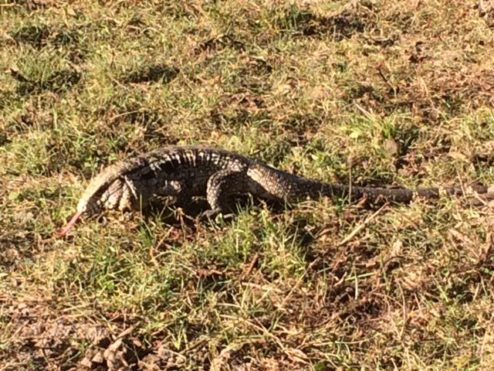
Posted from Porto Jofre, State of Mato Grosso, Brazil.
-17.3646102-56.7748532
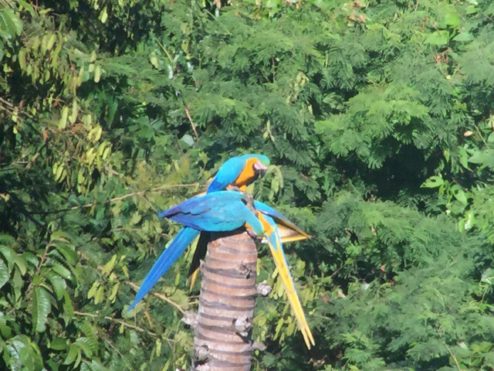 Macaws are of course everywhere, flying and squawking exuberantly in breeding pairs. We even caught two Red-Headed Manikin birds doing their Michael Jackson “Moon Walk” moves to entice breeding females. That is worth watching on You Tube videos.
Macaws are of course everywhere, flying and squawking exuberantly in breeding pairs. We even caught two Red-Headed Manikin birds doing their Michael Jackson “Moon Walk” moves to entice breeding females. That is worth watching on You Tube videos.
